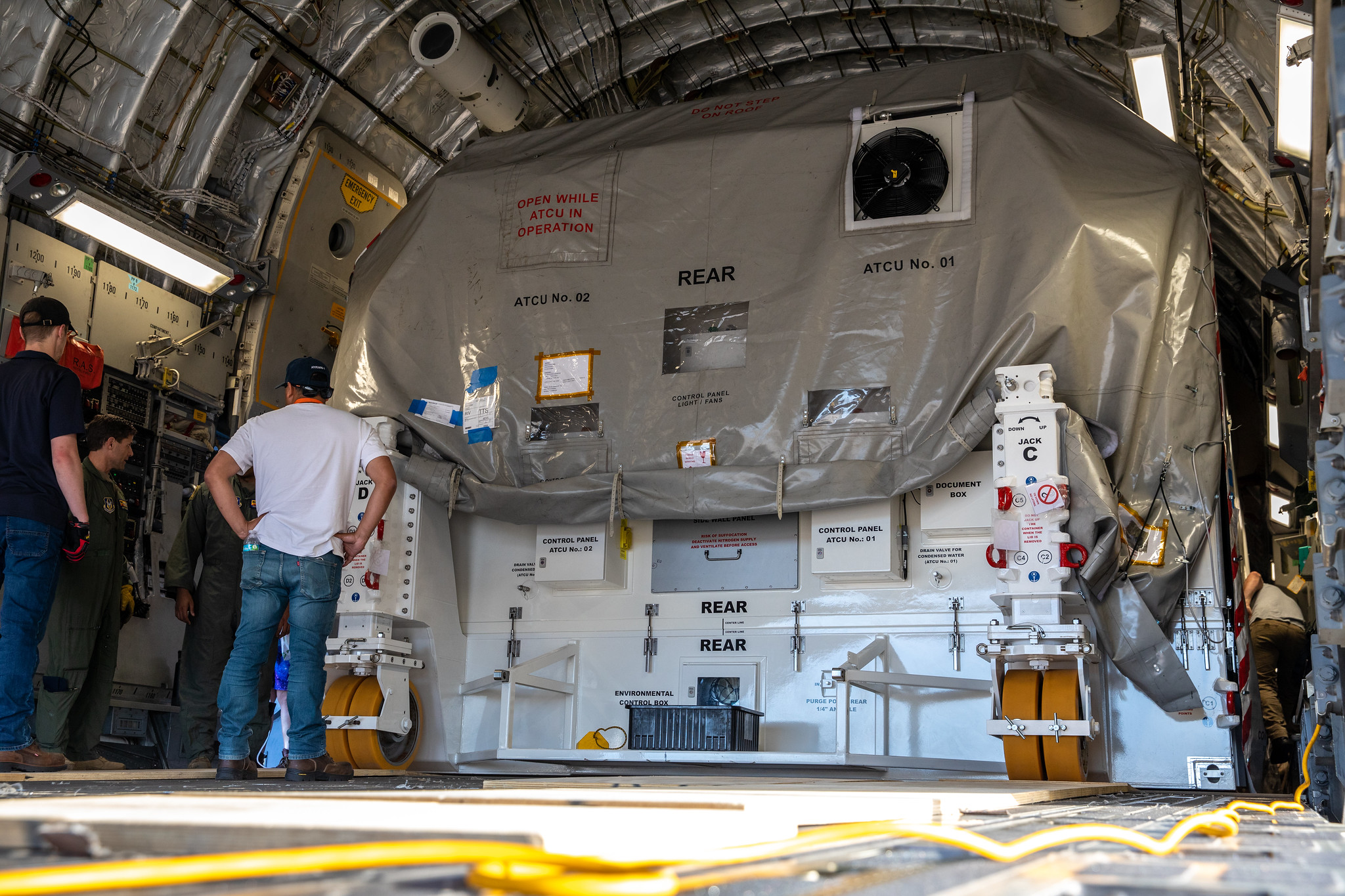
The Psyche spacecraft completed its journey from NASA’s Jet Propulsion Laboratory (JPL) in Southern California to NASA’s Kennedy Space Center in Florida. First, it traveled to March Air Reserve Base, about 55 miles southeast of JPL, before flying cross-country aboard a C-17 aircraft to the Launch and Landing Facility (formerly the Shuttle Landing Facility) where crews offloaded the spacecraft. Over the next three months, the spacecraft will undergo additional preparations before launching aboard a SpaceX Falcon Heavy rocket on Aug. 1.
The Psyche spacecraft will use solar-electric propulsion to travel approximately 1.5 billion miles (2.4 billion kilometers) to rendezvous with its namesake asteroid in 2026. This will make it the first spacecraft to use Hall-effect thrusters beyond the orbit of the Moon. This thruster technology traps electrons in a magnetic field and uses them to ionize onboard propellant, expending much less propellant than equivalent chemical rockets. Psyche also carries three scientific instruments: an imager, magnetometer, and a gamma ray and neutron spectrometer.
The unique, metal-rich Psyche asteroid may be part of the core of a planetesimal, a building block of rocky planets in our solar system. Learning more about the asteroid could tell us more about how our own planet formed and help answer fundamental questions about Earth’s own metal core and the formation of our solar system.
The launch of Psyche will include two secondary payloads, NASA’s Deep Space Optical Communications (DSOC) technical demonstration, which is attached to the spacecraft as a separate experiment and the Janus spacecraft. DSOC will perform the agency’s first demonstration of optical communications beyond the Earth-Moon system, and will use lasers to send data at a higher rate than typical spacecraft radio communications. Janus is two small spacecraft that will study two different binary asteroids (two asteroids that orbit each other) to understand the formation and evolution of these objects.
The Psyche mission is led by Arizona State University. JPL, which is managed for NASA by Caltech in Pasadena, California, is responsible for mission’s overall management, system engineering, integration and testing, and mission operations. Maxar Technologies in Palo Alto, California, provided the high-power solar electric propulsion spacecraft chassis. NASA’s Launch Services Program (LSP), based at Kennedy, is managing the launch. Psyche will be the 14th mission in the agency’s Discovery program and LSP’s 100th primary mission. Numerous international, university, and commercial partners are part of the Psyche team.
For more information check out the mission website.

 Today, launch and mission managers are holding the final major review, called the Launch Readiness Review, for the Sentinel-6 Michael Freilich mission that will launch from Space Launch Complex 4 at Vandenberg Air Force Base in California. Launch is targeted for 9:17 a.m. PST (12:17 p.m. EST) on Saturday, Nov. 21.
Today, launch and mission managers are holding the final major review, called the Launch Readiness Review, for the Sentinel-6 Michael Freilich mission that will launch from Space Launch Complex 4 at Vandenberg Air Force Base in California. Launch is targeted for 9:17 a.m. PST (12:17 p.m. EST) on Saturday, Nov. 21.